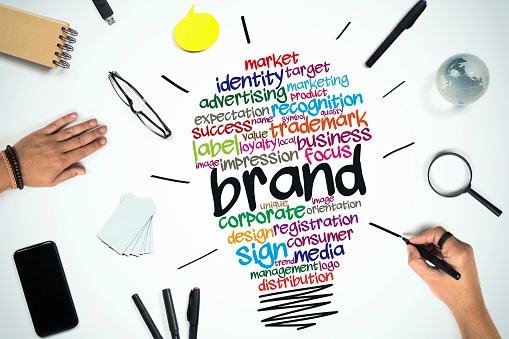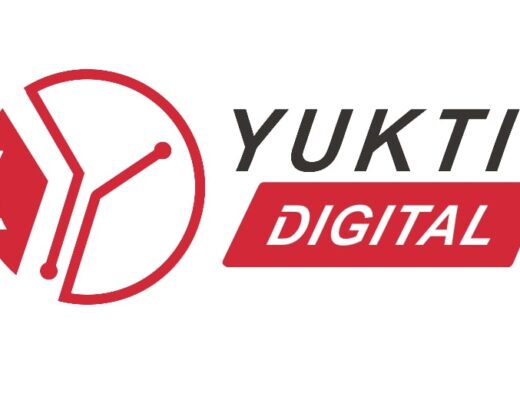In today’s crowded marketplace, it’s essential for businesses to create a strong brand identity that sets them apart from their competitors. A brand identity encompasses everything from a company’s logo and colour scheme to its messaging and marketing materials. One often overlooked aspect of brand identity is signage. Signs play a crucial role in communicating a company’s brand to customers, both indoors and outdoors. Today, Yukti Digital will explore the role of such marketing components in creating a strong brand identity and offer tips for designing effective signs.
Why Signage Matters?
First impressions matter, and for many customers, the first interaction they have with a business is through its signage. Signs are often the first thing that customers see when they approach a business, whether it’s a storefront sign or an outdoor billboard. A well-designed sign can convey a company’s brand, values, and personality, creating a memorable and positive impression in the minds of potential customers.
This can also play a crucial role in wayfinding, helping customers navigate and find their way around a physical space. For example, directional signs in a shopping mall or office building can make it easier for customers to find the stores or offices they are looking for, enhancing the customer experience and reducing frustration.
Designing Effective Signs
To create effective signage that supports a strong brand identity, there are several factors to consider:
- Consistency: It’s important to ensure that all signs for a business are consistent in terms of design, messaging, and brand elements such as colour scheme and typography. This helps to reinforce the brand identity and make it easier for customers to recognize and remember the business.
- Visibility: This should be designed with visibility in mind, making them easy to read and understand from a distance. This includes choosing the right font size and type, as well as ensuring that the sign is positioned in a location that maximises its visibility.
- Simplicity: Simple, easy-to-understand signs are often the most effective. Avoid cluttering the sign with too much information or graphics, as this can make it harder to read and detract from the brand identity.
- Durability: This should be designed to withstand the elements and last for a long time. This includes using high-quality materials that are resistant to fading, cracking, or other damage, as well as ensuring that the sign is installed securely.
Types Of Signage
There are many different types of signage that businesses can use to support their brand identity, including:
- Outdoor signs: These signs are typically mounted on the exterior of a building and can include storefront signs, billboards, and banners. Outdoor signs are often the first point of contact that customers have with a business, making them a critical component of a strong brand identity.
- Indoor signs: These signs are located inside a business and can include wayfinding signs, menu boards, and promotional signs. Indoor signs help to create a cohesive brand experience for customers and reinforce the brand identity.
- Digital signage: This includes displays that use electronic or digital technology to display messages, such as video screens or digital menu boards. This can be highly effective at capturing customers’ attention and creating a dynamic and engaging brand experience.
- Vehicle signage: This includes graphics or lettering applied to a company vehicle, such as a car or truck. This can be a highly effective way to promote a business and create brand recognition in the local community.
Importance Of Signage Design
Signage design is an important aspect of branding that should not be overlooked. They not only attract potential customers, but it also helps to reinforce brand messaging and create a consistent customer experience. A well-designed marketing element can help to create a lasting impression on customers, which can lead to increased brand recognition and loyalty.
This is crucial for companies that depend on foot traffic, including restaurants and retail establishments. These businesses can use them to draw in potential customers and communicate important information about their products or services. It can also be used to enhance the overall customer experience, by providing clear directions and making it easier for customers to navigate the business.
Elements Of Good Signage
There are several elements of good signage that you should consider when designing your sign:
1. Legibility
It should be simple to read the sign from a distance. This means using appropriate font sizes and styles and choosing high contrast colours that are easy to see.
2. Visibility
It should be visible from all angles and in all lighting conditions. This means choosing the right location for your sign and using appropriate lighting to make it stand out.
3. Simplicity
This should be simple and easy to understand. It should convey your brand message in a clear and concise manner.
4. Consistency
It should be consistent with your brand identity. This means using the same colours, fonts, and style as your other marketing materials.
5. Creativity
It should be creative and unique. It should be designed to grab attention and create a memorable impression.
How To Incorporate Your Brand’s Unique Personality
When it comes to branding, creating a unique personality for your brand is key to standing out from the crowd. This personality should be reflected in all aspects of your business, including these advertising materials. Here are some tips for incorporating your brand’s unique personality into this type of marketing element.
1. Start With Your Brand Identity
Before you start designing your advertising material, you need to have a clear understanding of your brand identity. Your brand identity includes your brand’s mission, values, and personality. Once you have a clear understanding of your brand identity, you can start to think about how to incorporate it into your advertising material.
2. Choose Font And Colour Selections That Represent Your Brand’s Personality
The colours and fonts you choose for your signboard should reflect your brand’s personality. For example, if your brand is fun and playful, you might choose bright, bold colours and a fun, whimsical font. If your brand is more serious and professional, you might choose more muted colours and a more traditional font.
3. Use Imagery That Represents Your Brand
The imagery you use in your signboard should also represent your brand’s personality. If your brand is focused on nature and sustainability, you might use images of trees, leaves, and other natural elements. If your brand is focused on technology, you might use images of circuit boards or other technological elements.
4. Incorporate Your Brand’s Tone of Voice
Your brand’s tone of voice is another important aspect of its personality. If your brand is fun and playful, you might use a more informal tone of voice in your marketing element. If your brand is more serious and professional, you might use a more formal tone of voice.
5. Make Them Unique
One way to make these marketing elements stand out and reflect your brand’s personality is to make it unique. This might mean using an unusual shape or design or incorporating elements that are specific to your brand. For example, if your brand is focused on coffee, you might design your branding component to look like a giant coffee cup.
6. Consider Its Placement
The placement of your marketing material is also important when it comes to reflecting your brand’s personality. If your brand is focused on sustainability, you might choose to place your advertising material in a location that emphasises greenery and natural elements. If your brand is focused on technology, you might choose to place it in a location that emphasises modernity and innovation.
7. Keep It Simple
While it’s important to incorporate your brand’s personality, it’s also important to keep things simple. Your advertising material should be easy to read and understand, even from a distance. Avoid using too much text or cluttering this with too many images or graphics.
8. Consider The Audience
Another important factor to consider when incorporating your brand’s personality into such components is your audience. Your marketing element should be designed to appeal to your target audience, while still remaining true to your brand’s personality. For example, if your target audience is young and trendy, you might choose a more modern and edgy design for your signboard.
9. Keep It Consistent
Finally, it’s important to keep this consistent with your brand’s overall look and feel. This means using the same colours, fonts, and imagery across all of your advertising material, as well as any other branding materials.
Incorporating your brand’s unique personality into advertising material design is key to creating a consistent and memorable brand identity. By choosing colours, fonts, imagery, and tone of voice that reflect your brand’s personality, and keeping your advertising material consistent with your overall branding, you can create sign boards that stand out and help your brand to connect with customers.
Bring Your Brand To Life
Signage plays a crucial role in creating a strong brand identity for businesses. Effective advertising material should be designed with consistency, visibility, simplicity, and durability in mind, and there are many different types of signage that businesses can use to support their brand identity. By investing in well-designed signage by Yukti Digital, businesses can create a positive and memorable first impression for customers, enhance the customer experience, and reinforce their brand identity in the minds of potential customers.






